Professor Robert Lue Redefines Effective Higher Education
9 out of 10 academics say teaching gives them a sense of satisfaction. This was revealed after the first ever Times Higher Education Teaching Survey was completed in 2017.
What was discovered is no matter how often academics enjoy spending time in front of the blackboard, one of the major issues is ensuring successful impartation of knowledge to students.1 Academic and Faculty Director of Harvard’s Derek Bok Center for Teaching and Learning, Professor Robert Lue describes how teaching and learning is constantly changing subsequently forcing academics to evaluate engagement in higher education classrooms more than ever before.
As an advocate of online education and the Course Convener of the Higher Education Teaching Certificate offered by Harvard’s Derek Bok Center for Teaching and Learning, Professor Lue is involved in conducting research on online pedagogies and pedagogical theories.
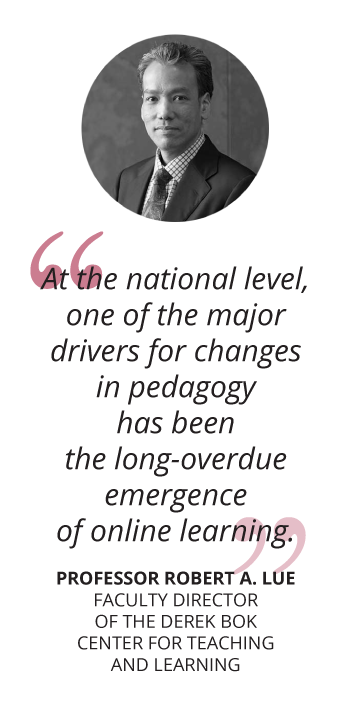
He recently sat down with the nonprofit higher education research institute, Project Information Literacy (PIL) to define pedagogy and discuss teaching, learning and the value of higher education and classroom management.
Below are Professor Lue’s key ideas and viewpoints on continuing education:2
Changing pedagogical theories and rethinking teaching and learning
“At the national level, one of the major drivers for changes in pedagogy has been the long-overdue emergence of online learning, as a solution to:
- The problems we educators all face in terms of cost and scalability.
- Something that can be creatively integrated with what we do with students on campus.
For the first time, many instructors are taking seriously the possibility that you can use online tools and approaches like the flipped classroom to really change what the learning experience might look like for students and how effective that experience can be. This interest in changing the learning experience has also been driven by an ever-growing mountain of evidence from educational research indicating that the traditional ways in which we teach are really not as effective as we once thought.”

Has 21st-century teaching and learning put an end to traditional lecturing?
“Every form of active learning includes context-setting, clarifying of perspective, and leading students through some kind of a discussion-engagement format. All of those things require compelling public speaking. To say lecturing is dead is inaccurate. Lecturing, and that form of projected public speaking, is now interspersed with a variety of other kinds of activities, so in my view, it’s not ‘either’, it’s ‘and’, you both lecture and do active learning.
Learners value the compelling, motivating context-setting that a really good speaker provides. To say activity-based learning has been the death knell of the lecture is not true; it has instead transformed how we lecture, communicate, and engage. We still need to stand up in front of a group and talk to them in a way that’s motivating. That kind of oratory motivation remains very important in the teaching and learning process.”
How to create an inclusive learning environment in a large classroom
“A feeling of isolation can be really deadly. Students often fall into an isolated situation when they are struggling with a problem alone, and get stuck in a counterproductive loop.
What you need to get the student to do is:
- Share the problem with another student
- Be challenged by the other student
- Challenge the other student themselves
This process of dialogue can happen both online and in person.”
Module three of the Higher Education Teaching Certificate discusses how academics can build rapport and develop an interactive and inclusive learning environment. In the higher education context, low attendance and completion rates are a reality and sometimes outside of an academic’s control. However, two factors where academics have direct influence are academic experience and the learning environment.
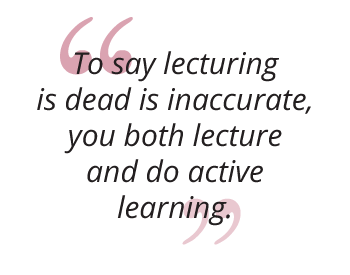
When students feel excluded from their learning experience, dropout rates increase. The implications for teachers lie in the need for them to alter their approaches or methods, and modes of instruction to foster meaningful relationships with and among their students.
Below are four ways you can create a more inclusive environment for your students:
- Know your students: Find out why your students are taking the course in the first place, their previous experience of the subject and importantly, learn their names. Inform them you are open to office visits at specific hours.
- Build rapport among the group: Give students opportunities to interact with each other, moving around in the class and interacting with different partners.
- Assess early and often: Assessment does not always have to be in the form of exams or papers. Complete simple check-ins throughout a semester by using things like surveys or polling software or asking students to write their answers down anonymously.
- Vary teaching strategies: Direct lecturing in every lesson can lead to low attendance and even lower interactivity. Have discussions and group work, and mix up content and course material through slides or videos.
One of Professor Lue’s tools used to develop an interactive teaching environment is active learning.
“Active learning is focused on recontextualization, opinion, and the application and synthesis of what you know. Even in a very large class, students can adapt to rearranging themselves and engaging in a paired or group activity very quickly once they get into the rhythm of doing it. What I’ve found is the problem is not the size of the class, but rather establishing clear expectations early on that this kind of learning activity will happen regularly and consistently. If you only do four active learning activities in a semester, the students never get accustomed to it, the process remains awkward, and there’s a learning curve every single time you do it — but if you do active learning activities in every class session, the students become very accustomed to them and the activities flow easily. Active learning is facilitated by practice and familiarity; if you set up a course to develop that familiarity, the size of the class will no longer be a problem.”
Incorporating activity-based learning into your lesson plan
“In activity-based learning, instead of simply listening and absorbing ideas presented verbally, students listen and try to apply those ideas in a different context. This is done through a series of group-based or individual classroom activities enabling students to construct their own understanding of something by applying what they’ve heard. I would say, higher-order cognitive gains are achieved when you can take a concept, understand it fully in terms of the way it was presented to you, and then apply it creatively to something quite different.
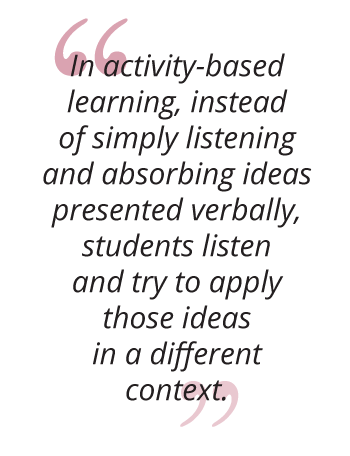
Instead of simply obeying instructions like ‘let’s apply A to B’, B is made compelling, surprising, or intriguing, and then there’s a much greater chance there will be full engagement with the activity in the classroom.”
What evidence proves activity-based learning works?
“We’ve seen students’ ability to apply concepts in new settings is improved by activity-based learning. Students’ performance on assessments, especially on so-called interval assessments, are enhanced by these kinds of activities in the classroom.”
Consider the cognitive domain when designing curriculum
Bloom’s Taxonomy has been in discussion with regards to education and pedagogy for many years. The most recent Bloom’s revised Taxonomy focuses primarily on the cognitive domain reflecting active thinking and learning. Bloom’s Taxonomy is used mostly when creating effective learning objectives, which in turn help academics plan appropriately to deliver instruction and design assessment tasks and strategies. Ensuring learning objectives are achievable and informing students of these before learning begins is a way for the academic and student to check whether the impartation of knowledge has been successful.
Bloom’s Taxonomy consists of the following six categories relating to the cognitive domain:
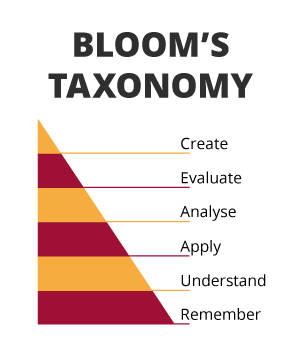
After establishing the cognitive processes by which students encounter and work with knowledge, academics can then move on to establishing how those objectives can be achieved.
The benefits of teaching and learning with technology
“Over the last decade, I’ve seen a real shift in how media is used in the communication of science, not just at the undergraduate but at the graduate student level. The importance of being able to communicate to a non-expert audience has really gained traction. At Harvard, we now have a project called Harvard Horizons that specifically trains graduate students in how to communicate their research to a non-expert audience.”
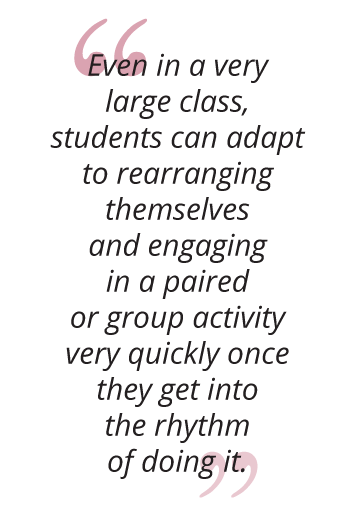
“We’ve been doing that not just in writing, but also in speaking, and we’ve combined speaking with multimedia, giving students the opportunity to be recorded, or to intersperse their presentations with stop-motion animation, diagrams that help explain concepts, and other tools. We’ve seen that the depth of understanding of any given concept is really enhanced by a multimedia approach targeted at addressing a more public, non-expert audience.”
Combine your passion for teaching with the ability to create an effective and supportive learning environment
Download a course prospectus and learn how to raise your institutional profile with Harvard Bok
